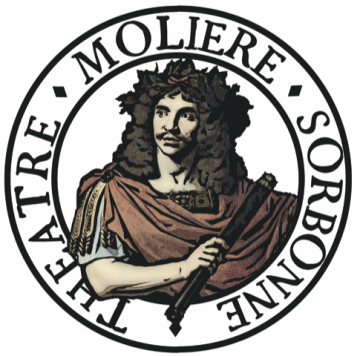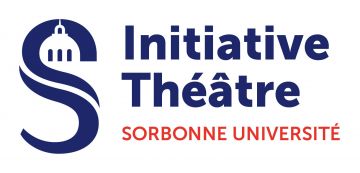In collaboration with Sorbonne University, the Centre de musique baroque de Versailles is organising an international colloquium devoted to the "dramaturgy of the visible" between the 16th and 18th centuries, bringing together researchers and performing arts practitioners to share research, compare practices and establish convergences.
The term “visual dramaturgies” was coined by the scholar Knut Ove Arntzen to apply to post-modern theatre. However, the concept is equally pertinent to the early modern era, from the emergence of new theatrical forms during the Renaissance to the disruptive reforms of the eighteenth century. Painted scenery not only placed the audience in an atmosphere suitable to the plot, it changed frequently before their very eyes; candlelight intensified the dramatic situation; and the costumes cleverly conveyed the protagonists natures. Movements and gestures also played important dramatic roles, by fashioning characters and weaving relationships among them, enhancing their utterances, and coloring the mood of a scene. Far from being reduced to ornament or simple entertainment, dance could be an essential part of the narrative, helping to build dramatic tension. Consequently, both playwright and librettist sometimes specified visual elements (sets, costumes or attitudes), chosen more for their dramatic potential than for their picturesque effect, proving that these elements were considered inseparable from the writing of the work. This is what Pierre Frantz has aptly called the “dramaturgie du visible”. As these examples suggest, the visual effect in the theatre is produced by subtle interplays of materials and bodies; as a result, therefore the study of their practices is crucial to our understanding of theatre history.
The interest of researchers in the visual – and material – aspects of early modern theatre has increased in the last decade. In addition to the rather developed histories of scenography and dance, an increasing number of publications on the topic of costume, lighting and historical acting have appeared, including more technical studies interested in their production and re-production.
This conference aims to support this trend from a transdisciplinary point of view by bringing together researchers and practitioners interested in Western performing arts (music theatre, dance, drama) of the period between the sixteenth and the eighteenth century in order to share the latest research, compare practices in various periods, countries and theatrical genres, search for convergences and perhaps even debunk some misconceptions.
Program
Monday 1 July
Introduction
-
Petra Dotlačilová (Stockholms universitet, CESR - CMBV)
-
Mickaël Bouffard (Sorbonne Université – TMS – CELLF)
Keynote
-
Knut Ove Arntzen (Universitetet i Bergen)
Visual Dramaturgy : Historically, contemporary - or vice versa
Session 1 : When Princes Ruled the Stage
MODERATOR
- Petra Dotlačilová (Stockholms universitet, CESR - CMBV)
SPEAKERS
- Kordula Knauss (Universität Bayreuth)
The Visual Strategies of Wilhelmine von Bayreuth: L’Huomo at the Margravial Opera House (1754/2023) - Marie-Christine Skuncke (Uppsala universitet)
Un roi scénographe et metteur en scène : Gustave III de Suède
Session 2 : scenographic Innovations beyond the Alps
MODERATOR
-
Hanna Walsdorf (Universität Basel)
SPEAKERS
- Magnus Tessing Schneider (Göteborgs universitet)
Finding the Right Colour: Orfeo ed Euridice by Gluck and Calzabigi (Vienna, 1762) - Martina Papiro (Schola Cantorum Basiliensis)
The Making of Stage Sets and their Impact on an Opera – Case Study: Demofoonte, Stuttgart 1764
Keynote
- Pierre Frantz (Sorbonne Université)
La pensée par le spectacle
Session 3 : Choosing and Staging the Performers
MODERATOR
-
Françoise Rubellin (Nantes Université)
SPEAKERS
-
Benoît Dratwicki (CESR - CMBV)
Le chœur d’opéra en scène de Lully à Gluck, ou comment faire bouger la « palissade chantante » -
Pauline Beaucé (Université Bordeaux Montaigne - IUF)
Marionnettes et enfants sur scène à la fin du XVIIIe siècle : nouvelles sources pour l’étude de la dramaturgie visuelle
Session 4 : Staging Italian Dramatic Genres in the 17th Century
MODERATOR
-
Martina Papiro (Schola Cantorum Basiliensis)
SPEAKERS
-
Matteo Giannelli (Università di Roma Tor Vergata, CESR – CMBV)
Was the Italian Oratorio Staged? The Case of Modena under Francesco II d’Este (1674-1694) -
Barbara Nestola (CESR - CMBV)
La création de l’Andromeda de Manelli et Ferrari à Venise (1637) : réflexions sur les pratiques scéniques -
Francesca Fantappiè (Università Statale Milano)
Visual Dramaturgy: The Role of Set Design, Machinery and Lighting in Renaissance and Baroque Theatre
Les Précieuses ridicules de Molière
Historically Informed Performance by la Troupe du Théâtre Molière Sorbonne
Campus Jussieu, Centre international de conférence de Sorbonne Université
Duration : 70 minutes
Tuesday 2 July
Session 5 : Visual Dramaturgies from the late 16th to the early 17th Centuries
MODERATOR
-
Mickaël Bouffard (Sorbonne Université)
SPEAKERS
-
Thibaud Ruellan (Aix-Marseille Université)
Visibilité et physicalité dans la tragédie de Saül (1561) -
Emanuele De Luca (Université Côte d'Azur)
« L’ordine delle robbe ». Dramaturgies visuelles de Giovan Battista Andreini au début du XVIIe siècle -
François Rémond (Université Sorbonne-Nouvelle)
"Item, un habit comique" : l'esthétique du costume de farce au XVIIe siècle
Session 6 : Dramaturgical Interplays of Body, Space and Dance
MODERATOR
-
Rebecca Harris-Warrick (Cornell University)
SPEAKERS
-
Matthieu Franchin (Sorbonne Université - IReMus)
La mise en scène des divertissements à la Comédie-Française au temps de Dancourt, Gillier et La Montagne -
Hubert Hazebroucq (Les Corps Eloquents - CRR de Paris)
Expérimentations chorégraphiques (1660-1675) : pour une dramaturgie du mouvement dansé -
Annamaria Corea (Sapienza Università di Roma)
Dancing Props in the Eighteenth-Century Pantomime Ballets -
Alan Jones (Independent researcher)
Sentiment, Sensations, and Sensationalism: Conveying Emotion through Movement and Gesture in Early American Pantomime
Session 7 : l'esthétique du tableau
MODERATOR
-
Laura Naudeix (Université Rennes 2)
SPEAKERS
-
Axel Moulinier (Chercheur indépendant)
Claude Gillot (1673-1722) à l’opéra : réflexions sur une série de cinq projets de décor -
Gabriel Federicci da Costa (Sorbonne Université)
Silvie de Landois : entre tragédie bourgeoise et tragédie du visible -
Elisa Cazzato (Università Ca' Foscari)
La dramaturgie du visible dans le décor d’Ignazio Degotti (1758-1824): Expertise italienne dans un contexte français
Session 8 : Politics and Visual Dramaturgies
MODERATOR
-
Magnus Tessing Schneider (Göteborgs universitet)
SPEAKERS
-
Caitlin Hubbard (Yale University)
Sex, Death and Tambourines: Spectacle as Political Commentary in Elkanah Settle’s The Empress of Morocco (1673) -
Annelis Kuhlmann (Aarhus universitet)
Visual Dramaturgy at the Royal Danish Theatre in the late 18th century -
Marlis Schweitzer (York University)
Deverbalization, Puppetry, and George Alexander Stevens’s Lecture on Heads
Session 9 : The Dark Side of the Stage
MODERATOR
-
Barbara Nestola (CESR - CMBV)
SPEAKERS
-
Judith le Blanc (Université de Rouen Normandie)
Voir la nuit. Dramaturgie visuelle de la scène nocturne -
Fei Wu (Sorbonne Université)
Le climat visuel et sonore mis en scène dans Jean Calas ou l’École des juges de Marie-Joseph Chénier
“Fair” of Digital resources and Stage Practices
The “fair” contains stands presenting research projects, digital tools and book exhibits related to visual dramaturgy: 3-D reconstructions, databases, instrument and costume recreations. Conference participants may circulate freely in the three rooms dedicated to the fair, discover, test, and discuss with the presenters.
-
Stand 1. Jerôme Maeckelbergh (theatrEurope)
Back to the Future of Heritage Theatre Technology -
Stand 2. Gaëlle Lafage (Sorbonne Université)
Molière et Lully au Palais-Royal : la maquette numérique d’un théâtre du XVIIe siècle -
Stand 3. Dominique Lauvernier (Chercheur indépendant)
Les interprètes sur les espaces scéniques de la Cour de France : s’adapter à des lieux et usages différents - présentation par casque d’immersion virtuelle de prototypes de restitutions d’espaces -
Stand 4. Christine Bayle (Cie Belles Dances - ACRAS)
Éléments dramaturgiques en question en danse ancienne -
Stand 5. Ildikó Sirató (Hungarian National Széchényi Library)
The Sketchbook of Pietro Travaglia -
Stand 6. Théâtre Molière Sorbonne - dir. Mickaël Bouffard (Sorbonne Université)
The Malade imaginaire Project -
Stand 7. Kateřina Cichrová (Czech National Heritage Institute - Château Český Krumlov)
From the Aristocratic Court to the Theatre Stage. Historical Wardrobe in the Collections of Czech Castles and Chateaux in the European Context -
Stand 8. Anna Kjellsdotter (Drottningholms Slottsteater)
Reconstructing Eighteenth-Century Dance Costume: “Demi-caractère” from Swedish Royal Armoury -
Stand 9. Book Exhibit ACRAS & Sorbonne Université Presses
-
Stand 10. Benoît Dratwicki et Neven Lesage (CESR - CMBV)
Les "Hautbois d'Atys" : ré-interroger un son et une pratique -
Stand 11. Petra Dotlačilová (Stockholms universitet, CESR - CMBV)
Présentation de la base de données « Costumes de scène européens du XVIIIe siècle » -
Stand 12. Barbara Nestola (CESR - CMBV)
Présentation de la base de données « Du livret à la scène : l’Académie royale de musique de ses origines à Rameau » -
Stand 13. Book Exhibit CMBV
Guided tour of Petit Théâtre de la reine
Raphaël Masson (Château de Versailles)
*only for participants
Wednesday 3 July
Session 10 : Body Techniques and Acting from the 16th to the 18th century
MODERATOR
-
Jed Wentz (Universiteit Leiden)
SPEAKERS
-
Antoine Gheerbrant (Sorbonne Université)
Le corps de l'acteur sur la scène élisabéthaine (1580-1620) -
Henriëtte Rietveld (Yale University)
Pickleherring’s Many Faces -
João Luís Paixão (Universiteit van Amsterdam)
Eye-rolling: Practical Insights on the Management of the Gaze in Eighteenth-Century Acting
Session 11 : Costuming Practices in Central Europe
MODERATOR
-
Petra Dotlačilová (Stockholms universitet, CESR – CMBV)
SPEAKERS
-
Karin Langer (Interdisciplinary Transformation University Austria)
The Peasant Costume at the Viennese Imperial Court and Stage of the Early 18th Century -
Mateja Fajt (Akademija za gledališče, radio, film in televizijo Univerza v Ljubljani)
"Feast for the Eyes": Costume Practices in Slovenian Theatre History from Counter-Reformation Rigour to Baroque Exuberance
Session 12 : Costuming practices and their meaning in England
MODERATOR
-
Mickaël Bouffard (Sorbonne Université)
SPEAKERS
-
Toni Bate (Liverpool Institute for Performing Arts)
Costume as Allegory: The Embodiment of Metaphor and Meaning in Court Masque Performance -
Moira Goff (Independent Scholar)
Costumes for Dancing on the London Stage: The Covent Garden Inventory, 1744
Round table : The Dramaturgy of how Space is Used in Staged Divertissements
MODERATOR
- Rebecca Harris-Warrick (Cornell University)
Under the aegis of the Association pour un Centre de recherche sur les Arts du spectacle aux XVIIe et XVIIIe siècles (ACRAS)
SPEAKERS
- Gilbert Blin (Opera director, Boston Early Music Festival)
- Antoine Fontaine (Scenographer)
- Guillaume Jablonka (Choreographer, Divertimenty)
- Anna Kjellsdotter (Costume designer, Drottningholm Slottsteater)
- Jed Wentz (Artistic researcher in historical acting, Universiteit Leiden)
Concluding session
-
Laura Naudeix (Université Rennes 2)
-
Magnus Tessing Schneider (Göteborgs universitet)


























